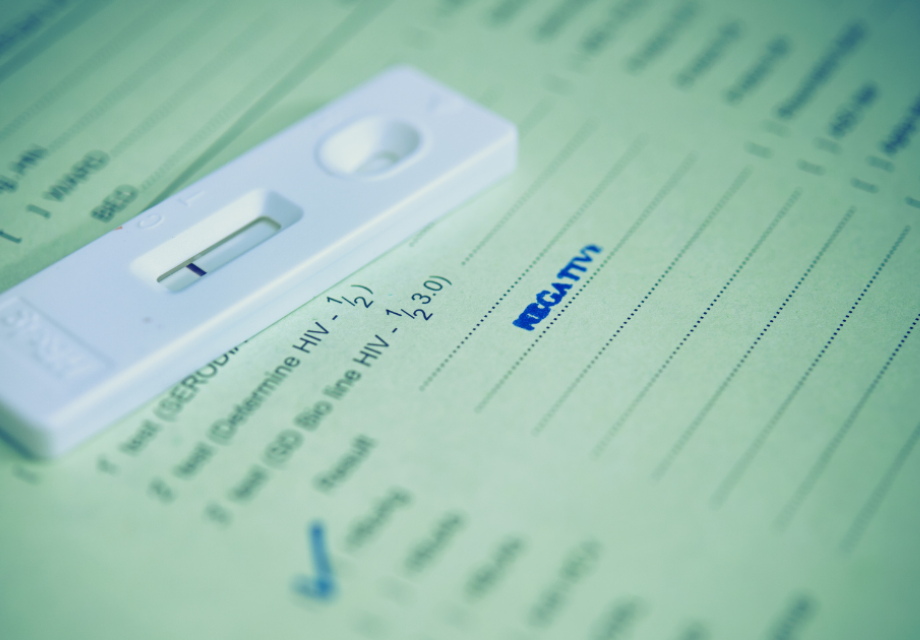Moving from two-test to three-test HIV diagnoses
Hester Phillips
09 December 2021
World Health Organization releases new toolkit to ensure HIV testing remains accurate as HIV prevalence falls
The World Health Organization (WHO) has released a new toolkit to support countries to change the way people are diagnosed with HIV.
What is in the new WHO HIV testing toolkit?
The toolkit is based on recommendations the WHO made in 2019.
The main recommendation is that countries should move from a two-test to a three-test diagnosis strategy as their HIV epidemics change.
As a general rule, WHO recommends that a number of tests should be used to achieve an accurate HIV diagnosis (defined as less than one false-positive per 100 people diagnosed with HIV). Before, WHO recommended two positive tests to diagnose HIV. It now recommends countries with HIV prevalence below 5% use three tests.
Countries with HIV prevalence of 5% or above should continue to use two tests. But they should track the situation and be ready to move to a three-test strategy when HIV prevalence falls below 5%.
The types of tests used should be rapid diagnostic tests (RDTs) and/or enzyme immunoassays (EIAs). There are many different RDTs and EIAs on the market. So, if countries are going to move to a three-test strategy, they must check the third test works well with the other two tests.
WHO’s new toolkit is designed to support countries in this process. It outlines how to do a study to check that the combination of tests being proposed will be accurate.
In its 2019 guidelines, WHO also made the following recommendations:
- Phase out older testing technologies, such as western blotting methods and line immunoassays. Instead, countries should use RDTs and EIAs. These are simpler to use, produce quick, more accurate results and cost less. Different levels of health providers, including community health workers, can carry them out. Using older testing technologies means people have to wait for results. This stops them starting antiretroviral treatment (ART) and PrEP immediately if they need to.
- Introduce dual HIV/syphilis tests for pregnant women and their partners, and for people most at risk of HIV.
- Do a further HIV test before starting someone on HIV treatment. This is to catch any human errors, such as mislabelled test results.
Why is this toolkit important?
False HIV test results can happen, although they are rare. This is why more than one test is needed to diagnose HIV.
The scale-up of HIV testing and ART means more people with HIV know their status and are on treatment than ever before. In a lot of countries, especially those with generalised HIV epidemics, this has led to a situation where the proportion of people taking an HIV test who actually have HIV is falling. Because more people testing for HIV do not have it, the chance of someone getting a false-positive result has increased (although it is still very low).
To avoid situations where people are misdiagnosed with HIV, WHO is encouraging countries with HIV prevalence below 5% to increase the number of tests that are used to confirm an HIV diagnosis. By making this change, countries will be able to ensure HIV testing remains accurate, even as prevalence continues to decline.
Many countries have taken up the WHO guidance, but gaps remain. Some have yet to fully move from a two-test to a three-test strategy or offer dual HIV/syphilis tests to those who need them. Some countries are still using outdated testing technologies.
What does this mean for HIV testing services?
If your country has an HIV prevalence of less than 5%, the way someone is diagnosed with HIV may be changing. It is important to know whether three tests are required – or will be required soon – or whether the national strategy is still to use two tests.
If you live in a country where HIV prevalence is above 5% it is likely that a two-test strategy will remain for now. But as more people with HIV are diagnosed and start on treatment, and HIV prevalence falls as a result, this situation is likely to change.
Countries that are making this change should be developing a plan and identifying a timeline. It is worth finding out whether your country is in this process and whether the needs of people most affected by HIV are being considered if so.
If you are aware of HIV testing being carried out that is using outdated laboratory testing, causing delays to diagnosis and people starting treatment, you can use the toolkit and this policy brief to advocate for more effective and cost-effective tests. You can also use WHO’s information to advocate for dual HIV/syphilis tests for pregnant women and people most at risk of HIV.
Get our news and blogs by email
Keep up-to-date with all our latest news stories and blogs by signing up to the Be in the KNOW news digest.
